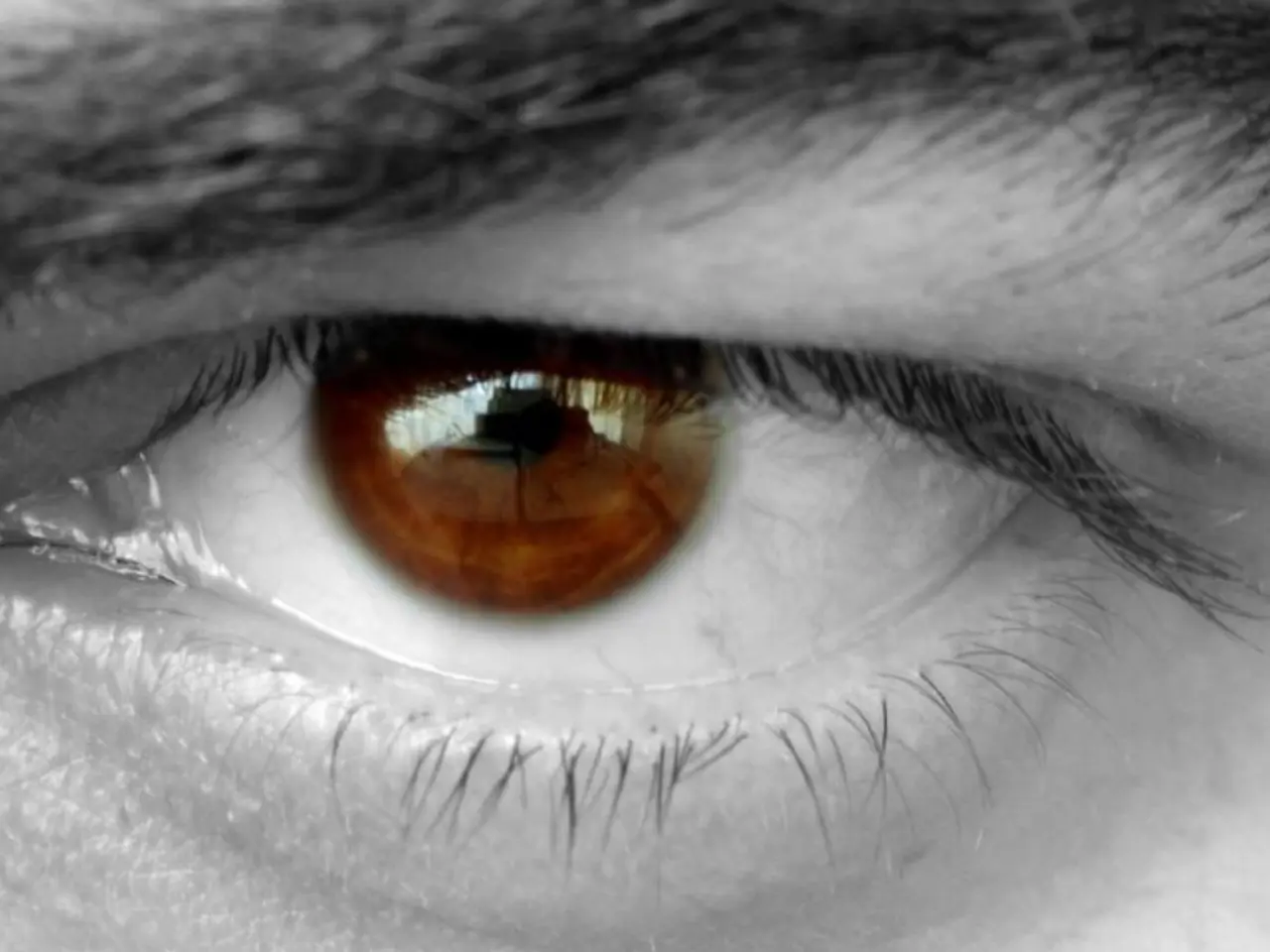Connection between Marijuana and Macular Degeneration: Potential Relationships and Ocular Health
In the realm of eye health, macular degeneration (AMD) is a significant concern for many individuals. This condition affects the central vision, often leading to blurriness and difficulty with everyday activities like reading and recognising faces. With AMD on the rise, people are turning to various treatments and lifestyle changes to help manage the condition. One such substance that has garnered attention is cannabis.
Medical professionals typically recommend other treatments for AMD, such as intravitreal injections, which have proven effective in slowing the progression of the disease. However, the role of cannabis in managing or treating AMD remains a topic of ongoing research and debate.
Cannabidiol (CBD), a compound of the cannabis plant, has antioxidant and anti-inflammatory properties that may offer potential in treating AMD in future studies. Some research suggests that cannabis may reduce the risk of AMD by delaying the inflammatory process that damages the macula. However, it's essential to note that CBD is not currently recommended as a formal line of treatment for AMD, and more research is needed to determine its definitive benefits or risks.
On the other hand, smoking cannabis could potentially accelerate the loss of blood vessels, which may lead to AMD developing sooner in younger people. Cannabis smoke contains carcinogenic and toxic compounds that may damage the eye's blood vessels. Smoking cannabis causes red eyes due to the component tetrahydrocannabinol (THC) lowering pressure in the eyes, causing the eye blood vessels to dilate.
Cannabis has significant adverse effects on certain visual functions, including visual acuity, contrast sensitivity, and nighttime vision. These effects may resolve after cessation, but they are important to consider, especially for individuals with AMD or other eye conditions.
While the research on smoking cannabis and its effects on AMD and overall eye health is limited and inconclusive, some studies suggest that cannabis may have some short-term benefits for other eye conditions, such as glaucoma. A 2019 review of studies even hinted at potential benefits for other eye conditions.
In summary, no current robust evidence shows that smoking cannabis directly affects AMD progression or overall eye health in a significant or clinically meaningful way. More targeted research is needed to clarify any potential relationships or mechanisms. Patients with AMD or other eye conditions should follow established medical advice and consult their eye care providers before considering cannabis use for ocular concerns.
Maintaining good eye health involves a holistic approach. Eating a diet high in nutritious foods such as dark, leafy greens and fish, regular physical activity, regular eye appointments, avoiding smoking, and following the 20/20/20 rule can help maximise eye health. Discussing the risks of developing hereditary eye conditions with a doctor and wearing glasses if instructed by an eye doctor are also important for maintaining eye health.
As the understanding of AMD and its potential treatments continues to evolve, it's crucial to stay informed and consult with medical professionals to make informed decisions about one's health. While cannabis may hold some promise for certain eye conditions, established medical treatments remain the most effective for AMD and other retinal diseases.
- In the realm of eye health, AMD or age-related macular degeneration is a significant concern, affecting central vision and leading to blurriness.
- The condition, AMD, has been rising, prompting people to seek alternative treatments and lifestyle changes for better management.
- One such treatment under research is cannabis, specifically its compound, Cannabidiol (CBD), which shows potential due to its antioxidant and anti-inflammatory properties.
- CBD, though promising, is not currently recommended as a formal line of treatment for AMD, as more research is needed to determine its benefits or risks.
- Conversely, smoking cannabis could potentially exacerbate AMD, as it contains carcinogenic and toxic compounds that damage the eye's blood vessels.
- Smoking cannabis, as a result, may lead to AMD developing at a younger age due to the damage to the eyes' blood vessels.
- Besides the potential risks, cannabis also has adverse effects on various visual functions, including visual acuity, contrast sensitivity, and nighttime vision.
- The role of cannabis in managing or treating AMD remains a debated topic, with limited and inconclusive research on its effects on AMD and overall eye health.
- For individuals with AMD or other eye conditions, it's essential to follow established medical advice and consult their eye care providers before considering cannabis use for ocular concerns.
- Maintaining good eye health involves a holistic approach, including a diet rich in nutritious foods like dark leafy greens and fish, regular physical activity, regular eye appointments, avoiding smoking, and following the 20/20/20 rule.
- As the understanding of AMD and its treatments continues to evolve, staying informed and consulting with medical professionals is crucial to make informed decisions about one's health.
- While cannabis may hold some promise for certain eye conditions, established medical treatments remain the most effective for AMD and other retinal diseases.




